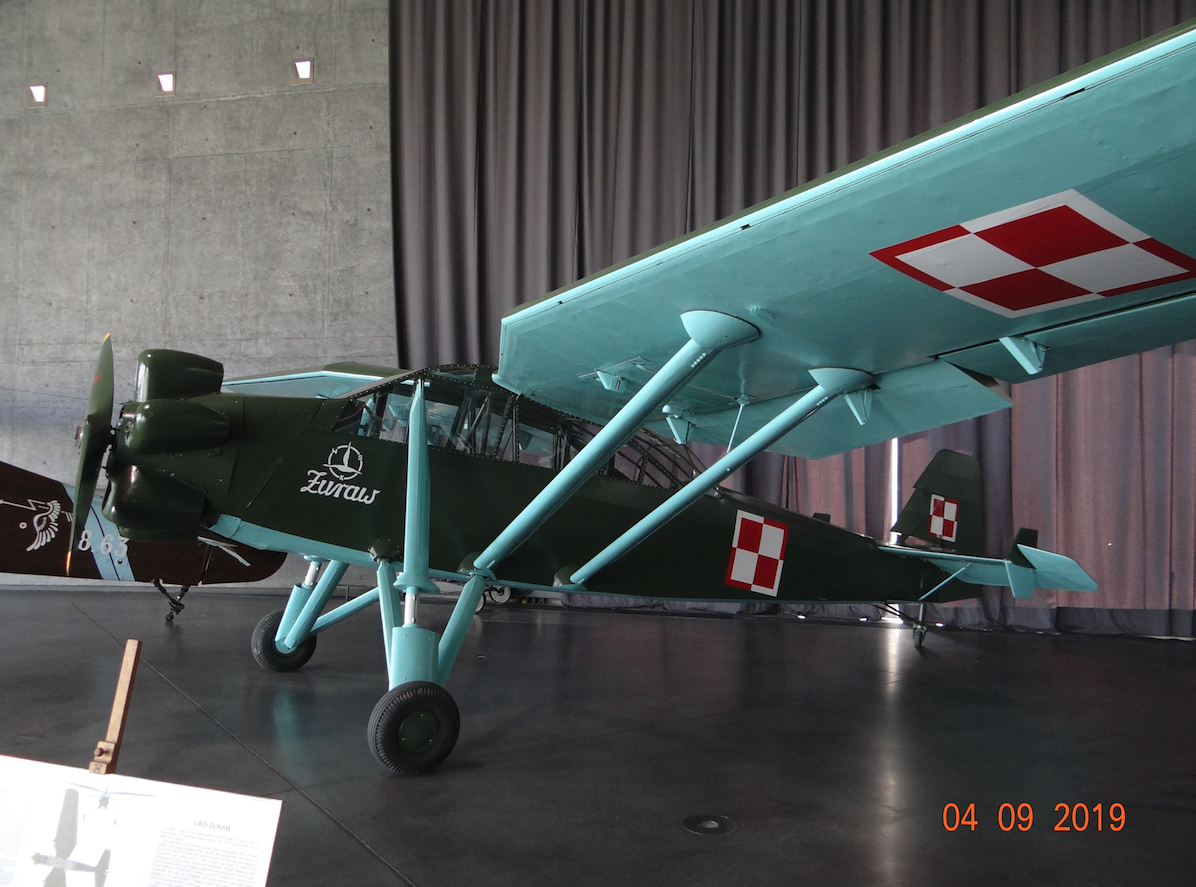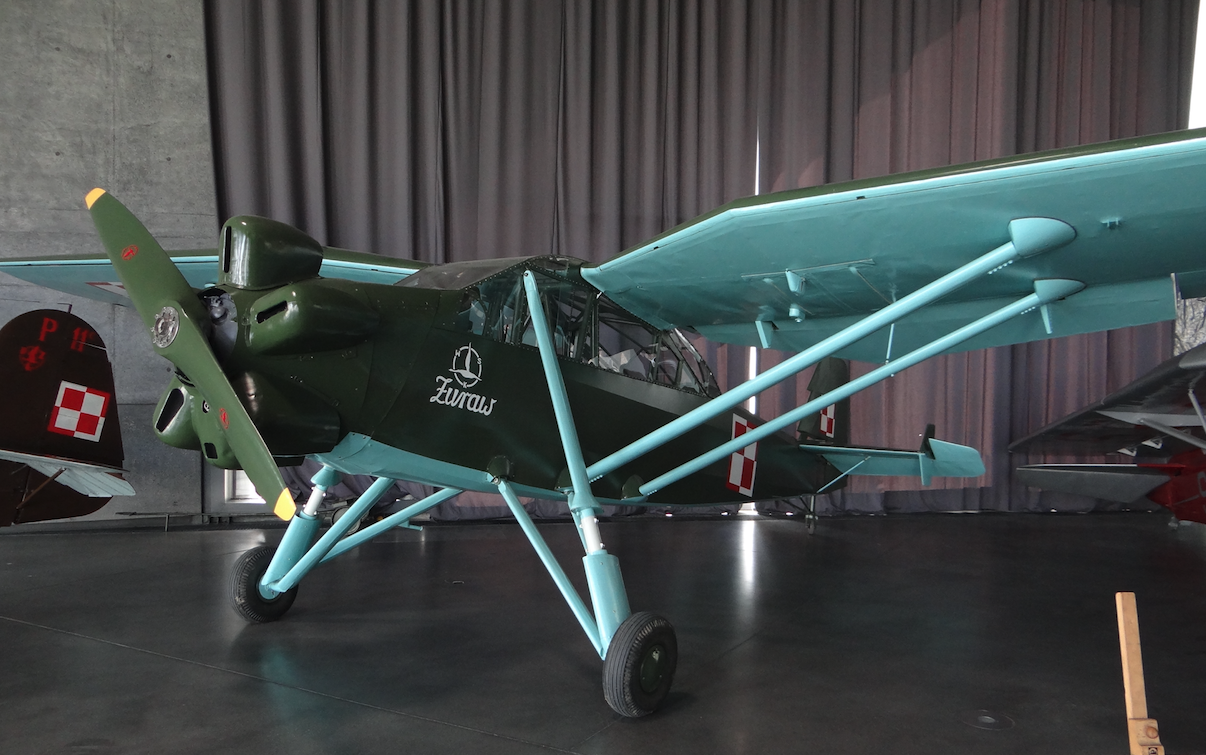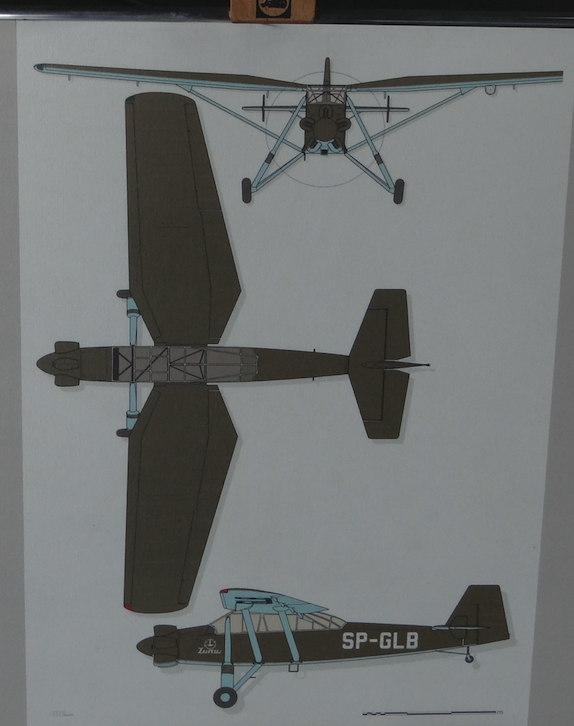History
LWD Żuraw
In 1948, the Air Force Command commissioned the LWD (Aeronautical Experimental Workshops) to develop a connecting plane that was to use emergency landing pads, i.e. a shortened takeoff and landing plane. The aircraft design was made in two years, 1948–1950. The project leader was M.Sc. Tadeusz Sołtyk. The aircraft was intended for liaison, school, observation, sanitary, towing, aerofoto and even bomb tasks. The assembly of a machine gun was even anticipated. The plane was also to fly at night. The plane was to be the successor of Polikarpov Po-2 and CSS-13 aircraft. The propulsion of the aircraft was to be the M-11FR engine, which was produced in Poland. The aircraft was designated LWD Żuraw.
Work on the plane proceeded slowly, because the political and military authorities doubted the success of the construction. The first flight of the LWD Żuraw aircraft did not take place until 1951-05-16, and the pilot was Antoni Szymański. In 1951, the LWD Żuraw prototype went to the Institute of Aviation in Warsaw, where it underwent approval tests. The aircraft showed stability at all speeds, and the minimum speed was 55 km / h. The roll-out length was only 65 m. The disadvantages of the aircraft were low payload and poorer lateral control. The aircraft did not go into serial production.
In 1956, a more powerful engine was planned to be installed. However, the Polish Army was not interested in this aircraft, because the Jak-12 and PZL-101 Gawron aircraft were already in production.
Construction LWD Żuraw
The LWD Żuraw crane is a single-engine high-wing aircraft that can take three people on board. Metal and wooden construction.
Double-girder wings, with a double trapezoidal contour, with a slight slant forward. The wings could be folded back for transport or hangar purposes. Wooden construction. Covering the lobe on the nose and upper plywood girder surface, the rest covered with canvas. The wings are supported by a pair of struts of duralumin pipes, with a drop section. Slotted ailerons, differential deflected. Large Fowler slotted flaps, covered with canvas. Along the entire leading edge there are gills manually operated from the cockpit.
The fuselage is a space truss welded from chromomolybdenum pipes. Profiling from wooden slats, covering with canvas. Covered cabin. The rear upper part of the cover was raised up to allow anyone to operate or in the sanitary version to facilitate the insertion of the stretcher.
Wooden texture. The caisson of the tail is covered with plywood, the rest with canvas.
Classic solid chassis. The landing gear is wide apart to facilitate landing on a makeshift take-off field.
Engine
M-11 FR radial engine with 118 kW (160 HP) start power.
The expected armament is 1 movable 7.62mm SzKAS observer machine gun. Before using the rifle, the shooter raised the rear fairing of the cabin. In the bomb version, the aircraft could take 230 kg of bombs.
Data T-T LWD Żuraw.
Span 11.7 m, length 8.26 m, height 2.98 m, carrying surface 21.12 m2, curb weight 913 kg, payload 244 kg, total weight 1 157 kg, maximum speed 168 km / h, cruising speed 140 km / h, landing speed 66 km / h, climb speed 2.1 m / s, ceiling 4,000 m, range 420 km.
Tally
One prototype was built.
Written by Karol Placha Hetman



